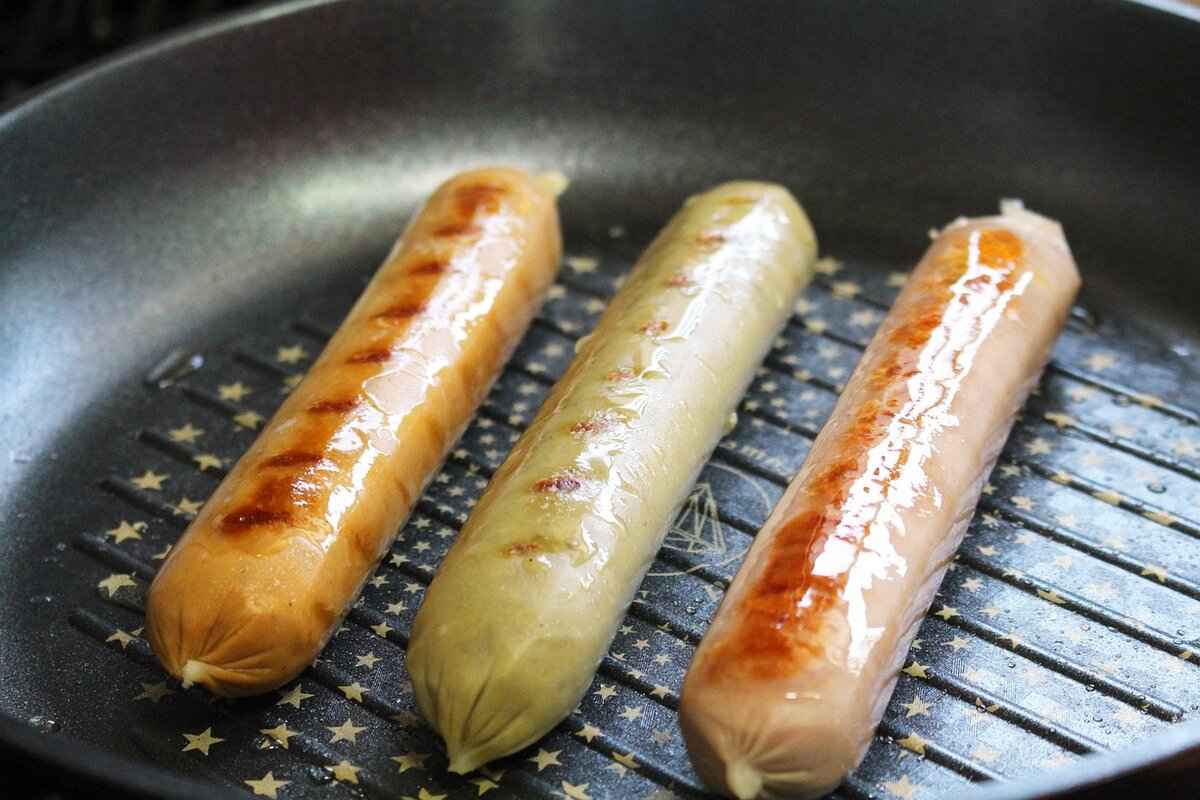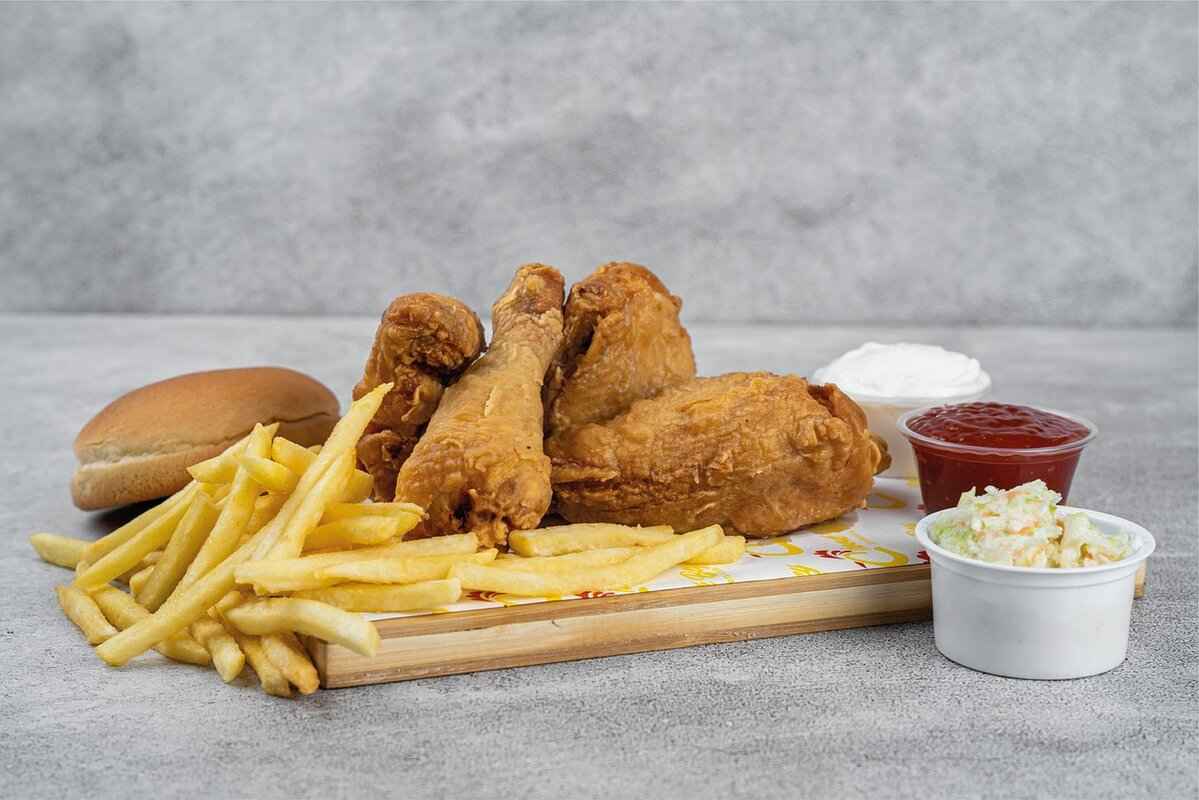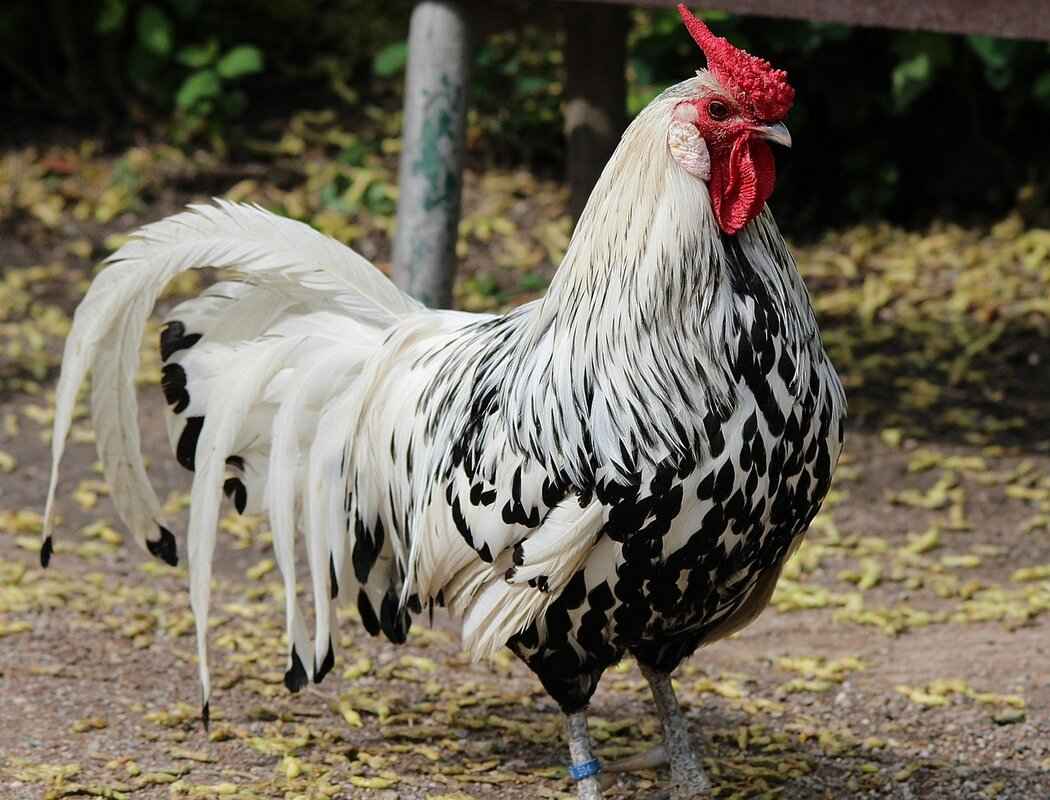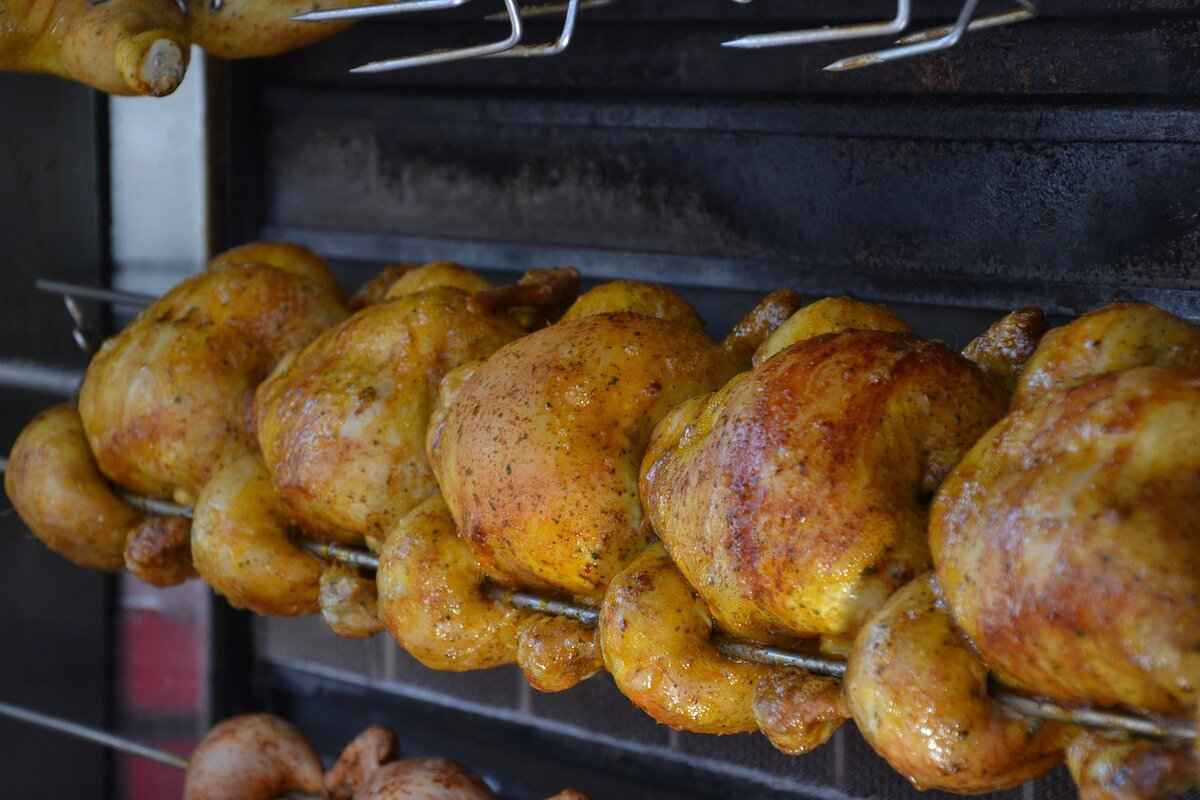This article explores the best methods for cooking chicken sausage in an air fryer, providing tips, techniques, and variations to ensure delicious results every time.
Why Choose Chicken Sausage?
Chicken sausage is a healthier alternative to traditional pork sausage, offering lower fat content while still being flavorful. It is a versatile protein that can be incorporated into various dishes. Understanding its benefits can enhance your culinary experience and promote healthier eating habits. Chicken sausage is often made from leaner cuts of meat, which means it can provide a satisfying meal without the excess calories. Additionally, many brands offer varieties that are seasoned with herbs and spices, making it easy to find flavors that suit your palate.
Preparing Chicken Sausage for Air Frying
Preparation is key to achieving perfect chicken sausage in an air fryer. Start by ensuring that your sausage is adequately thawed if it was frozen. You can safely thaw chicken sausage overnight in the refrigerator or use the microwave’s defrost setting for quicker results. Once thawed, consider seasoning your sausage, as this can elevate the flavor profile significantly. A simple mix of olive oil, garlic, and your favorite herbs can work wonders. Preheating your air fryer to the recommended temperature is also essential for optimal results.
Setting Up Your Air Fryer
Understanding your air fryer’s settings is vital for cooking chicken sausage perfectly. The ideal temperature for cooking chicken sausage in an air fryer is typically around 375°F (190°C). Cooking at this temperature allows the sausage to cook evenly while developing a crispy exterior. As for the cooking time, it generally ranges from 10 to 15 minutes, depending on the thickness of the sausage. Always ensure that you check for doneness using a meat thermometer, which should read at least 165°F (74°C) to ensure food safety.
Cooking Techniques for Chicken Sausage
There are multiple techniques to cook chicken sausage in an air fryer. The direct air frying method is straightforward and effective. Simply place the sausages in the basket, ensuring they are not overcrowded, and cook until they reach the desired internal temperature. Another technique involves using foil or parchment paper to line the basket, which can help catch drippings and make cleanup easier. This method can also help retain moisture, resulting in juicy sausages.
Serving Suggestions for Chicken Sausage
Once your chicken sausage is cooked, the next step is serving it. Pairing chicken sausage with roasted or sautéed vegetables can enhance the meal’s nutritional value and flavor profile. Consider serving it alongside bell peppers, zucchini, or asparagus. Additionally, chicken sausage makes for excellent sandwiches. You can create delicious combinations by adding toppings such as sautéed onions, mustard, or fresh herbs, turning a simple meal into a gourmet experience.
Storing Leftover Chicken Sausage
Proper storage of leftover chicken sausage can prolong its freshness. Refrigerating your sausage in an airtight container can keep it safe for up to 3-4 days. If you want to store it for a longer period, freezing is a great option. Wrap the sausages tightly in plastic wrap or aluminum foil, then place them in a freezer-safe bag. This method helps retain flavor and texture, allowing you to enjoy your chicken sausage later without compromising quality.
Common Mistakes to Avoid
Even experienced cooks can make mistakes. One common pitfall is overcrowding the air fryer. This can lead to uneven cooking, as the hot air needs space to circulate. Always arrange your sausages in a single layer for optimal air circulation. Another mistake to avoid is ignoring internal temperature. Always use a meat thermometer to ensure your chicken sausage is cooked to the safe internal temperature of 165°F (74°C).
Health Benefits of Chicken Sausage
Understanding the health benefits of chicken sausage can enhance your meal choices. Chicken sausage typically contains less fat than traditional sausage, making it a healthier option. This lower fat content can contribute to healthier eating habits, especially for those looking to reduce their fat intake. Additionally, chicken sausage is an excellent source of protein, which is essential for muscle repair and growth. Incorporating it into your diet can help meet your protein needs effectively while enjoying a flavorful meal.

Why Choose Chicken Sausage?
When it comes to making healthier dietary choices, chicken sausage stands out as a fantastic alternative to traditional pork sausage. With the growing emphasis on health and wellness, many individuals are looking for options that not only satisfy their taste buds but also align with their nutritional goals. Chicken sausage offers a variety of benefits that make it an appealing choice for both casual cooks and culinary enthusiasts alike.
- Lower Fat Content: One of the most significant advantages of chicken sausage is its lower fat content compared to pork sausage. This reduction in fat translates to fewer calories, making chicken sausage a great option for those looking to manage their weight or reduce their fat intake.
- High Protein Source: Chicken sausage is an excellent source of protein, essential for muscle repair and growth. Incorporating it into your meals can help meet your daily protein needs efficiently without excessive calories.
- Versatile Flavor Profiles: Chicken sausage comes in various flavors and seasonings, allowing for versatility in cooking. From spicy Italian to herb-infused varieties, there’s a chicken sausage to suit every palate and dish.
- Fewer Preservatives: Many brands of chicken sausage are made with minimal preservatives and fillers, especially when compared to processed pork sausages. This means you can enjoy a more wholesome product that aligns with clean eating principles.
- Easy to Cook: Chicken sausage is not only delicious but also incredibly easy to prepare. Whether grilled, baked, or air-fried, it cooks quickly and evenly, making it a convenient option for busy weeknight dinners.
Understanding these benefits can significantly enhance your culinary experience. By choosing chicken sausage, you are not only making a healthier choice but also opening the door to a world of flavors that can elevate your meals. Its adaptability allows it to be paired with various ingredients, from fresh vegetables to grains, creating balanced and nutritious dishes.
In summary, opting for chicken sausage is a wise decision for those seeking a healthier lifestyle without compromising on taste. Its lower fat content, high protein levels, and versatility make it a fantastic addition to any diet. So next time you’re in the grocery store, consider reaching for chicken sausage to elevate your meals while staying on track with your health goals.

Preparing Chicken Sausage for Air Frying
Preparation is essential for achieving perfect chicken sausage in an air fryer. The process involves several key steps that ensure your sausage is not only cooked thoroughly but also retains its juiciness and flavor. In this section, we will explore the important stages of preparation, including thawing, seasoning, and preheating your air fryer, all of which contribute to optimal results.
Thawing Frozen Chicken Sausage
Proper thawing is crucial for even cooking, especially when working with frozen chicken sausage. The safest method is to transfer the sausages from the freezer to the refrigerator and allow them to thaw overnight. This slow thawing method keeps the sausages at a safe temperature, minimizing the risk of bacterial growth.
- Quick Thawing: If you’re short on time, you can use the cold water method. Place the sausages in a sealed plastic bag and submerge them in cold water for about an hour.
- Microwave Thawing: As a last resort, you can use the microwave’s defrost setting, but this may partially cook the sausage, affecting its texture.
Seasoning Your Sausage
Seasoning plays a vital role in enhancing the flavor of chicken sausage. While many store-bought varieties come pre-seasoned, adding your own blend can elevate the taste even further. Here are some popular seasoning options:
- Herbs: Fresh or dried herbs like rosemary, thyme, or parsley can add a refreshing touch.
- Spices: Consider spices such as paprika, garlic powder, or black pepper for a flavor boost.
- Marinades: Marinating your sausages a few hours before cooking can infuse them with rich flavors. Use a mix of olive oil, vinegar, and your favorite spices.
When seasoning, ensure that you coat the sausages evenly for consistent flavor throughout. A light drizzle of olive oil can help the spices adhere better.
Preheating Your Air Fryer
Preheating your air fryer is a step that should not be overlooked. This process ensures that the chicken sausage cooks evenly and develops a crispy exterior. Most air fryers require a preheating time of around 3 to 5 minutes at a temperature of 380°F (193°C). Preheating allows the air fryer to reach the desired cooking temperature before you place the sausages inside.
By following these preparation steps—thawing, seasoning, and preheating—you set the stage for a delicious chicken sausage dish that is both flavorful and satisfying. These foundational practices not only enhance the overall cooking experience but also ensure that your meal is a success.
Thawing Frozen Chicken Sausage
When it comes to cooking chicken sausage, proper thawing is essential for achieving an even cook and maximizing flavor. Thawing not only ensures that the sausage cooks thoroughly but also helps retain its moisture, preventing it from drying out during the cooking process. Here, we will explore the most effective and safe methods to thaw frozen chicken sausage before air frying, ensuring a delicious meal every time.
Why Thawing is Important
Thawing chicken sausage properly is crucial for several reasons. First, it allows for even cooking, which is vital for food safety. Cooking frozen sausage can lead to uneven heat distribution, resulting in some parts being undercooked while others may be overdone. Second, thawing helps maintain the moisture content of the sausage, enhancing its flavor and texture.
Methods for Thawing Chicken Sausage
- Refrigerator Thawing: This is the safest method. Simply transfer the frozen chicken sausage to the refrigerator and allow it to thaw overnight. This slow thawing process keeps the sausage at a safe temperature, preventing bacterial growth.
- Cold Water Thawing: If you need to thaw the sausage more quickly, place it in a sealed plastic bag and submerge it in cold water. Change the water every 30 minutes to ensure it stays cold. This method typically takes about 1-2 hours, depending on the size of the sausage.
- Microwave Thawing: For those in a hurry, you can use the microwave’s defrost setting. However, be cautious, as this can partially cook the sausage if not monitored closely. Once thawed in the microwave, it should be cooked immediately.
Tips for Successful Thawing
- Always plan ahead. If you know you will be cooking chicken sausage, thaw it in the refrigerator the night before.
- Avoid thawing chicken sausage at room temperature, as this can promote the growth of harmful bacteria.
- Once thawed, chicken sausage can be stored in the refrigerator for 1-2 days before cooking.
Final Thoughts
In summary, proper thawing is a vital step in preparing chicken sausage for air frying. Whether you choose to thaw in the refrigerator, with cold water, or in the microwave, following these methods will ensure your chicken sausage is safe to eat and deliciously tender. By taking the time to thaw correctly, you will set the stage for a perfectly cooked meal that retains all its flavorful juices.
Seasoning Your Sausage
Seasoning is a crucial element that can significantly enhance the flavors of chicken sausage. Unlike traditional pork sausages, chicken sausage has a milder flavor profile, making it an ideal canvas for various seasoning blends and marinades. In this section, we will explore different seasoning options that not only complement the natural taste of chicken sausage but also elevate your dish’s overall flavor profile.
- Herbs and Spices: Fresh herbs such as parsley, thyme, and rosemary can add a burst of flavor to chicken sausage. For a spicier kick, consider using cayenne pepper or paprika. A blend of garlic powder, onion powder, and black pepper can create a savory base that enhances the sausage’s taste.
- Citrus Marinades: Citrus fruits like lemons and oranges can brighten the flavors of chicken sausage. A marinade made from fresh lemon juice, olive oil, and a pinch of salt can infuse the sausage with a refreshing zest. Allow the sausage to marinate for at least 30 minutes before cooking for maximum flavor absorption.
- Asian-Inspired Seasonings: For a unique twist, try incorporating soy sauce, ginger, and sesame oil into your seasoning mix. This combination can add a rich umami flavor to the chicken sausage, making it perfect for stir-frying or grilling.
- Smoky Flavors: If you’re looking to replicate the smoky taste of traditional sausages, consider using smoked paprika or liquid smoke. These ingredients can impart a deep, smoky flavor without the need for a grill or smoker.
- Sweet and Spicy Blends: A combination of brown sugar and chili powder can create a sweet and spicy rub that caramelizes beautifully when cooked. This blend works exceptionally well for air frying, providing a crispy outer layer while keeping the inside juicy.
When seasoning chicken sausage, it’s essential to strike a balance between the spices and the natural flavors of the meat. Experimenting with different combinations can lead to discovering your personal favorite blend.
Additionally, consider the cooking method when selecting your seasonings. For example, if you plan to grill the chicken sausage, a marinade might be more suitable, while dry rubs work well for air frying.
Lastly, always taste your seasoning before applying it to the sausage. This practice ensures that the flavors are just right and allows for adjustments as needed. By taking the time to season your chicken sausage thoughtfully, you can create a dish that is not only delicious but also memorable.

Setting Up Your Air Fryer
is a crucial step in ensuring that your chicken sausage is cooked to perfection. Understanding the settings and functionalities of your air fryer can significantly enhance your cooking experience. This section will guide you through the essential aspects of air fryer setup, including temperature settings, cooking times, and tips for achieving optimal results.
Properly setting up your air fryer not only influences the cooking time but also affects the overall flavor and texture of your chicken sausage. An air fryer works by circulating hot air around the food, creating a crispy exterior while keeping the inside juicy. If the settings are incorrect, you may end up with undercooked or overcooked sausage. Therefore, understanding your air fryer’s features is imperative.
The ideal temperature for cooking chicken sausage in an air fryer typically ranges between 350°F to 400°F. At this temperature, the sausage cooks evenly, ensuring that it reaches the necessary internal temperature of 165°F for safe consumption. Here’s a quick reference for temperature settings:
| Temperature (°F) | Cooking Result |
|---|---|
| 350 | Juicy and tender sausage |
| 375 | Crispy exterior, moist interior |
| 400 | Quick cooking, crispy outside |
Timing is equally important when cooking chicken sausage. Depending on the thickness and type of sausage, cooking times can vary. Generally, you should aim for:
- Fresh Chicken Sausage: 12-15 minutes
- Frozen Chicken Sausage: 15-20 minutes
It’s advisable to check the sausage halfway through the cooking process, turning them for even browning. Using a meat thermometer can help ensure that your sausage reaches the desired internal temperature.
Preheating your air fryer is a step that can often be overlooked. Just like an oven, preheating helps to create an optimal cooking environment. Preheat your air fryer to the desired temperature for about 3-5 minutes before placing the chicken sausage inside. This helps in achieving a crispy texture right from the start.
Some air fryers come with accessories like racks or skewers. Utilizing these can enhance air circulation and help cook your chicken sausage more evenly. If you choose to use foil or parchment paper, ensure it’s cut to size and does not block the air circulation.
Finally, keep an eye on your chicken sausage as it cooks. Different air fryer models may have variations in cooking efficiency. If you notice any signs of uneven cooking, adjusting the temperature or shaking the basket can help achieve better results.
By understanding your air fryer’s settings and following these guidelines, you can cook chicken sausage that is not only safe to eat but also deliciously satisfying. Enjoy experimenting with different temperatures and times to find the perfect combination that suits your taste!
Optimal Temperature Settings
Cooking chicken sausage in an air fryer can yield delicious results, but achieving the perfect texture and flavor hinges on one critical factor: the optimal cooking temperature. Understanding the right temperature settings not only ensures that your chicken sausage cooks evenly but also guarantees that it reaches a safe internal temperature, making it both tasty and safe to eat.
The temperature at which you cook chicken sausage plays a pivotal role in determining its final quality. Cooking at too low a temperature can result in undercooked sausage, which poses health risks, while excessively high temperatures may dry out the meat, leading to a less enjoyable eating experience. Therefore, finding the sweet spot is essential.
For cooking chicken sausage in an air fryer, the recommended temperature range is typically between 350°F to 400°F (175°C to 200°C). This range allows for a balance between thorough cooking and moisture retention. At these temperatures, the sausage will develop a nice golden-brown exterior while remaining juicy on the inside.
- 350°F (175°C): Cooking chicken sausage at this temperature usually takes about 12 to 15 minutes. This slower cooking method is ideal for those who prefer a softer texture.
- 375°F (190°C): This is a popular choice, as it strikes a balance between cooking speed and moisture retention. Expect a cooking time of 10 to 12 minutes.
- 400°F (200°C): For a crispier exterior, cooking at this temperature will typically take around 8 to 10 minutes. Keep an eye on the sausage to avoid overcooking.
Regardless of the temperature you choose, it is crucial to check the internal temperature of the chicken sausage to ensure it is safe to eat. The USDA recommends that chicken sausage reaches an internal temperature of 165°F (74°C). Using a meat thermometer can help you accurately gauge when your sausage is done. Insert the thermometer into the center of the sausage, avoiding contact with the casing, to get an accurate reading.
Different air fryer models may have varying heat distributions, so it’s essential to familiarize yourself with your specific appliance. Some air fryers may cook more efficiently than others, which could affect the cooking time and temperature. Always refer to your air fryer’s manual for specific guidelines and adjust your cooking times accordingly.
Preheating your air fryer can significantly enhance the cooking process. By preheating to your desired temperature, you ensure that the chicken sausage begins cooking immediately upon placement in the fryer. This can help achieve a better sear and lock in flavors. A good rule of thumb is to preheat for about 3 to 5 minutes before adding your sausage.
In summary, understanding the optimal temperature settings for cooking chicken sausage in an air fryer is essential for achieving delicious and safe results. With the right temperature range, cooking time, and the use of a meat thermometer, you can enjoy perfectly cooked chicken sausage every time.
Cooking Time Guidelines
Timing is essential for achieving the best texture and flavor when preparing chicken sausage in an air fryer. Understanding the ideal cooking times for various types of chicken sausage can help you avoid the pitfalls of undercooking or burning your meal. Here, we will explore the recommended cooking times, factors that influence these times, and tips for ensuring perfectly cooked chicken sausage every time.- Fresh Chicken Sausage: Typically, fresh chicken sausage should be cooked at a temperature of 375°F (190°C) for about 10 to 12 minutes. It’s crucial to turn the sausages halfway through the cooking time to ensure they cook evenly.
- Frozen Chicken Sausage: If you’re starting with frozen chicken sausage, increase the cooking time to 15 to 18 minutes at the same temperature. Always check that the internal temperature reaches a safe 165°F (74°C).
- Pre-cooked Chicken Sausage: For pre-cooked varieties, a shorter cooking time of 8 to 10 minutes at 375°F (190°C) is sufficient. This allows them to heat through without drying out.
To ensure the best results, it’s important to use a meat thermometer to check the internal temperature. This step is critical not only for food safety but also for achieving the desired juiciness and flavor. Chicken sausage should reach an internal temperature of 165°F (74°C) to be considered safe for consumption.
Another factor to consider is the size and thickness of the sausage. Larger or thicker sausages may require additional cooking time, while smaller or thinner ones will cook more quickly. Always monitor your sausages closely, especially if you’re experimenting with different brands or types.
Additionally, the air fryer model can influence cooking times. Some air fryers may cook faster or slower than others due to differences in wattage and design. It’s a good practice to familiarize yourself with your specific air fryer’s performance and adjust cooking times accordingly.
In conclusion, mastering the cooking times for chicken sausage in an air fryer is key to achieving delicious results. By following these guidelines and paying attention to the size and type of sausage, you can enjoy perfectly cooked chicken sausage that is both safe and flavorful.

Cooking Techniques for Chicken Sausage
Chicken sausage is a versatile ingredient that can be prepared in various ways, especially in an air fryer. This cooking method not only enhances the flavor but also ensures a healthier meal. In this section, we will explore several effective techniques for cooking chicken sausage in an air fryer, focusing on achieving different textures and flavors.
- Direct Air Frying Method: This is the most straightforward technique. Simply place the chicken sausages in the air fryer basket without any additional materials. Set the temperature to around 375°F (190°C) and cook for approximately 12-15 minutes. This method allows the sausages to cook evenly while developing a crispy exterior. Flip the sausages halfway through the cooking time to ensure even browning.
- Using Foil or Parchment Paper: For those who prefer a cleaner cooking process, using foil or parchment paper can be beneficial. Line the air fryer basket with parchment paper, leaving some space for air circulation. This technique helps catch drippings and makes cleanup easier. Cook at the same temperature as the direct method, but check for doneness slightly earlier, as the paper can sometimes speed up cooking.
- Stuffing with Vegetables: For a flavorful twist, consider stuffing chicken sausages with vegetables before air frying. Cut a slit in the sausage and fill it with diced bell peppers, onions, or spinach. This not only adds moisture but also enhances the flavor profile. Cook using the direct air frying method, but be mindful that the added filling may require a minute or two longer to ensure everything is cooked through.
- Marinating for Extra Flavor: Marinating chicken sausage before air frying can significantly enhance its taste. Use a mixture of olive oil, garlic, herbs, and spices. Let the sausages marinate for at least 30 minutes or overnight for deeper flavor penetration. Once marinated, proceed with the direct air frying method. The result will be a juicy sausage bursting with flavor.
- Cooking with a Glaze: Applying a glaze during the last few minutes of cooking can add a delicious finish to your chicken sausage. Consider using a mixture of honey and mustard or barbecue sauce. Brush the glaze onto the sausages when they have about 3-4 minutes left in the cooking time. This will caramelize the glaze and create a delightful crust.
Each of these techniques offers a unique way to prepare chicken sausage, allowing you to experiment with flavors and textures. Whether you prefer the simplicity of direct air frying or the added complexity of stuffing and marinating, these methods will help you create a delicious meal. Remember to always check the internal temperature, ensuring it reaches at least 165°F (74°C) for safe consumption. With these techniques, your chicken sausage will be a hit at any meal!
Direct Air Frying Method
The is one of the most efficient ways to prepare chicken sausage, offering a perfect balance between convenience and flavor. This technique utilizes rapid air circulation to cook the sausage evenly, resulting in a delightful combination of a juicy interior and a crispy exterior. Let’s delve deeper into how to master this method for an exceptional cooking experience.
- Step 1: Preheat Your Air Fryer – Before you begin, it is essential to preheat your air fryer. This step ensures that the chicken sausage starts cooking immediately, allowing for even browning and crispiness. Set your air fryer to a temperature of around 375°F (190°C) and let it heat for about 5 minutes.
- Step 2: Prepare the Sausages – While your air fryer is preheating, take your chicken sausages out of the packaging. If they are frozen, ensure they are fully thawed for even cooking. Pat them dry with a paper towel to remove excess moisture, which can hinder crisping.
- Step 3: Seasoning – Season your sausages to enhance their flavor. A simple mix of salt, pepper, garlic powder, and paprika can work wonders. For a more adventurous flavor, consider marinating the sausages in your favorite herbs and spices for about 30 minutes before cooking.
- Step 4: Arrange in the Air Fryer – Place the sausages in the air fryer basket in a single layer. Avoid overcrowding the basket, as this can lead to uneven cooking. Allow space between each sausage to ensure proper air circulation.
- Step 5: Cooking Time – Cook the sausages for approximately 12-15 minutes, turning them halfway through to achieve an even golden-brown color. The internal temperature should reach at least 165°F (74°C) for safe consumption.
- Step 6: Rest and Serve – Once cooked, let the sausages rest for a few minutes before serving. This resting period allows the juices to redistribute, ensuring a flavorful bite.
Benefits of the Direct Air Frying Method
Utilizing the direct air frying method not only simplifies the cooking process but also promotes healthier eating. By cooking with less oil compared to traditional frying methods, you significantly reduce the fat content of your meal. The air fryer circulates hot air, which helps to create that desired crispy texture without the need for excess oil.
Moreover, this technique is incredibly versatile. You can experiment with different flavors and seasonings, making it easy to customize your chicken sausages to suit your taste preferences. Whether you prefer a spicy kick or a savory herb blend, the direct air frying method can accommodate your culinary creativity.
In summary, the direct air frying method is a straightforward and effective way to prepare chicken sausage, yielding delicious results that are both juicy and crispy. With the right preparation and technique, you can enjoy a healthier version of this classic dish without sacrificing flavor.
Using Foil or Parchment Paper
When it comes to cooking chicken sausage in an air fryer, utilizing foil or parchment paper can significantly enhance the cooking process. These materials not only simplify cleanup but also contribute to even cooking, making them invaluable tools in your kitchen arsenal.
Benefits of Using Foil and Parchment Paper
Using foil or parchment paper offers several advantages during cooking:
- Easy Cleanup: One of the most significant benefits is that these materials catch drippings and grease, preventing them from accumulating in the air fryer basket. This makes post-cooking cleanup a breeze.
- Even Cooking: Foil and parchment paper can help distribute heat evenly around the food, ensuring that your chicken sausage cooks thoroughly without hot spots.
- Flavor Retention: Wrapping chicken sausage in foil can lock in moisture and flavors, resulting in juicier and more flavorful sausages.
How to Use Foil or Parchment Paper
To effectively use foil or parchment paper in your air fryer, follow these simple steps:
- Cut to Size: Begin by cutting a piece of foil or parchment paper that fits the bottom of your air fryer basket. Ensure that it’s large enough to catch any drippings but not so large that it obstructs airflow.
- Preheat Your Air Fryer: Before placing the chicken sausage, preheat your air fryer to the recommended temperature. This ensures that the cooking process begins immediately.
- Place the Chicken Sausage: Lay the chicken sausage on top of the foil or parchment paper. If using foil, you can fold the edges up slightly to create a barrier for drippings.
- Monitor Cooking: Keep an eye on the cooking process, as the foil or parchment can affect cooking times slightly. Adjust as necessary to ensure even cooking.
Tips for Success
– When using foil, avoid covering the entire basket, as this can restrict airflow. Instead, create a bowl-like shape to allow hot air to circulate around the food.- If using parchment paper, ensure it’s specifically designed for high-heat cooking. Regular parchment paper may not withstand the temperatures of an air fryer.- For added flavor, consider seasoning the foil or parchment paper with herbs or spices before placing the chicken sausage on top.
Conclusion
Incorporating foil or parchment paper into your air frying routine not only enhances the cooking experience but also ensures that your chicken sausage comes out perfectly every time. With these materials, you can enjoy easier cleanup, even cooking, and maximized flavor, making your meals both delicious and hassle-free.

Serving Suggestions for Chicken Sausage
Once your chicken sausage is cooked to perfection, the next exciting step is serving it. With its savory flavor and versatile nature, chicken sausage can be enjoyed in numerous creative ways. Here are some delightful serving ideas that pair wonderfully with chicken sausage, ensuring a satisfying meal every time.
Vegetables are a fantastic complement to chicken sausage, providing both flavor and nutrition. Consider sautéing or roasting seasonal vegetables such as bell peppers, zucchini, and asparagus. The sweetness of the peppers and the earthiness of zucchini enhance the chicken sausage’s flavor profile.
- Grilled Vegetable Medley: Combine sliced zucchini, bell peppers, and red onions, toss them with olive oil, salt, and pepper, and grill them alongside your chicken sausage for a colorful, nutritious platter.
- Stir-Fried Greens: Sauté kale or spinach with garlic and a splash of lemon juice to create a vibrant side that balances the richness of the sausage.
Chicken sausage makes for an excellent sandwich filling. The juicy texture and robust flavor can be paired with various toppings and condiments to create a mouthwatering meal.
- Classic Chicken Sausage Sandwich: Serve grilled chicken sausage in a toasted bun topped with sautéed onions and peppers, a dollop of mustard or aioli, and fresh arugula.
- Breakfast Sandwich: Layer sliced chicken sausage with a fried egg and avocado on a whole-grain English muffin for a hearty breakfast option.
Chicken sausage can elevate pasta dishes with its rich flavors. It can be sliced and added to various pasta recipes, creating a satisfying meal.
- Pasta Primavera: Toss cooked pasta with grilled chicken sausage, seasonal vegetables, and a light olive oil or tomato sauce for a fresh and healthy dinner.
- Spicy Sausage Penne: Combine sliced chicken sausage with penne pasta, spinach, and a spicy marinara sauce for a comforting yet zesty dish.
For a lighter option, chicken sausage can be sliced and added to salads, providing protein and flavor. Here are some salad ideas:
- Grilled Chicken Sausage Salad: Mix greens with grilled chicken sausage, cherry tomatoes, cucumbers, and a balsamic vinaigrette for a refreshing meal.
- Quinoa Salad: Combine cooked quinoa, diced chicken sausage, black beans, corn, and cilantro for a hearty, protein-packed salad.
Another fun way to serve chicken sausage is by pairing it with various dips and spreads. This can make for a great appetizer or snack.
- Mustard and Honey Dip: Create a simple dip using mustard and honey for a sweet and tangy contrast to the savory sausage.
- Hummus Platter: Serve sliced chicken sausage with a variety of hummus flavors and pita bread for a Mediterranean-inspired snack.
With these creative serving suggestions, chicken sausage can be transformed into a variety of delicious meals that cater to different tastes and occasions. Whether you’re hosting a dinner party or preparing a quick weeknight meal, these ideas will ensure your chicken sausage is the star of the plate.
Pairing with Vegetables
Chicken sausage is not only a delicious protein option but also a versatile ingredient that can be paired with a wide variety of vegetables. The right vegetable pairings can enhance both the nutritional value and flavor profile of your meal. Here, we explore some fantastic vegetable options to complement your chicken sausage, providing a delightful dining experience.
- Bell Peppers: These colorful vegetables add a sweet crunch to your dish. They can be sliced and air-fried alongside chicken sausage for a quick and tasty meal. Bell peppers are rich in vitamins A and C, making them a healthy addition.
- Onions: Caramelized onions bring a rich, sweet flavor that pairs beautifully with the savory taste of chicken sausage. Sautéing or air-frying onions until they’re golden can elevate the dish immensely.
- Zucchini: This versatile vegetable absorbs flavors well and can be sliced into rounds or strips. When air-fried, zucchini becomes tender and slightly crispy, making it an excellent companion for chicken sausage.
- Spinach: Adding fresh spinach to your chicken sausage dish can boost its nutritional profile. Spinach is packed with iron and vitamins, and it wilts down quickly when cooked, making it easy to incorporate into any meal.
- Broccoli: This nutrient-dense vegetable adds a satisfying crunch and a wealth of vitamins. Air-frying broccoli florets alongside chicken sausage can create a delightful contrast in textures.
- Sweet Potatoes: Offering a natural sweetness, sweet potatoes can be diced and air-fried until crispy. Their fiber content complements the protein in chicken sausage, making for a well-rounded meal.
Creating Flavorful Combinations
When pairing chicken sausage with vegetables, consider the flavor profiles of both. For instance, combining spicy chicken sausage with roasted bell peppers and onions can create a delightful balance of heat and sweetness. Alternatively, a milder chicken sausage can be paired with earthy vegetables like zucchini and spinach for a comforting, hearty meal.
Cooking Techniques
Using an air fryer allows for a quick and healthy cooking method that retains the flavors and nutrients of both the chicken sausage and vegetables. You can toss your chosen vegetables in a bit of olive oil, season with herbs and spices, and air fry them alongside the sausage for a delicious one-pan meal.
Experimenting with Herbs and Spices
Don’t forget to experiment with different herbs and spices to further enhance your vegetable pairings. Fresh herbs like rosemary, thyme, or basil can add aromatic qualities, while spices like paprika or garlic powder can introduce exciting depth to your dish.
In conclusion, pairing chicken sausage with a variety of vegetables not only enhances the meal’s appeal but also boosts its nutritional value. With so many options available, you can easily create a colorful and satisfying plate that caters to your taste preferences and dietary needs.
Creating Delicious Sandwiches
Chicken sausage is not only a flavorful addition to your meals but also a fantastic ingredient for creating delicious sandwiches. These sandwiches can be tailored to suit various tastes and preferences, making them a versatile choice for lunch or dinner. Below, we explore innovative sandwich ideas that will elevate your chicken sausage experience.
- Classic Chicken Sausage Sandwich: Start with a fresh hoagie roll or a crusty baguette. Grill or air fry your chicken sausage until golden brown. Add your favorite toppings such as sautéed onions, bell peppers, and a drizzle of mustard for a simple yet satisfying meal.
- Italian Chicken Sausage Sub: For an Italian twist, use a sub roll and layer it with marinara sauce, melted mozzarella cheese, and fresh basil. The combination of savory chicken sausage and rich marinara creates a mouthwatering flavor profile.
- Spicy Chicken Sausage Wrap: If you prefer something lighter, consider using a whole wheat wrap. Fill it with sliced chicken sausage, avocado, lettuce, and a spicy chipotle mayo for a kick. This combination not only tastes great but also adds a healthy element to your meal.
- Breakfast Chicken Sausage Sandwich: Transform your breakfast with a chicken sausage patty, a fried egg, and a slice of cheese on a toasted English muffin. This hearty sandwich is perfect for starting your day with protein and flavor.
Enhancing Your Sandwich with Toppings and Condiments
The right toppings and condiments can significantly enhance your chicken sausage sandwich. Here are some ideas to consider:
- Fresh Vegetables: Crisp lettuce, ripe tomatoes, and crunchy cucumbers add freshness and texture.
- Cheese Varieties: Experiment with different types of cheese such as cheddar, provolone, or pepper jack to add richness and flavor.
- Homemade Sauces: Create your own sauces like garlic aioli, pesto, or a tangy barbecue sauce to personalize your sandwich.
- Pickles and Relishes: Adding pickles or relishes can introduce a delightful tang that complements the savory taste of chicken sausage.
Pairing Your Sandwich with Sides
To round out your meal, consider pairing your chicken sausage sandwich with sides like sweet potato fries, a side salad, or coleslaw. These accompaniments not only enhance the dining experience but also add nutritional value to your meal.
In summary, chicken sausage sandwiches offer endless possibilities for creativity in the kitchen. By experimenting with different breads, toppings, and condiments, you can create a sandwich that is uniquely yours. Whether you prefer a classic approach or a modern twist, chicken sausage can be the star of the show in your next sandwich creation.

Storing Leftover Chicken Sausage
Proper storage of leftover chicken sausage is essential for maintaining its freshness and flavor. Whether you have cooked too much or simply want to save some for later, following the right techniques can help ensure that your leftovers remain safe to eat and delicious. This section provides valuable tips on how to store, reheat, and repurpose chicken sausage effectively.
Refrigeration is crucial for preserving the quality of leftover chicken sausage. To keep your sausage fresh:
- Cool Before Storing: Allow the chicken sausage to cool to room temperature before placing it in the refrigerator. This prevents condensation, which can lead to spoilage.
- Use Airtight Containers: Store the sausage in airtight containers or wrap it tightly in plastic wrap. This minimizes exposure to air, which can dry out the sausage.
- Label and Date: Always label your containers with the date of storage. This helps you keep track of how long the leftovers have been in the fridge.
- Consume Within 3-4 Days: For optimal freshness, consume refrigerated chicken sausage within 3 to 4 days. After this period, the risk of bacterial growth increases.
Freezing chicken sausage is a convenient way to save leftovers for later. By following these best practices, you can retain the flavor and texture of the sausage:
- Cool Completely: Ensure the sausage is completely cooled before freezing to prevent ice crystals from forming, which can affect texture.
- Use Freezer Bags or Containers: Place the sausage in freezer-safe bags or containers, removing as much air as possible to prevent freezer burn.
- Portion Control: Consider freezing in portions that are easy to thaw and use later. This makes meal prep more convenient.
- Label and Date: Similar to refrigeration, label your freezer bags or containers with the date. Frozen chicken sausage is best used within 2 to 3 months for optimal quality.
When it comes time to enjoy your leftover chicken sausage, reheating it properly is important to ensure it remains tasty:
- Oven Method: Preheat your oven to 350°F (175°C). Place the sausage on a baking sheet and heat for about 10-15 minutes, or until warmed through.
- Microwave Method: For a quicker option, place the sausage on a microwave-safe plate, cover it with a damp paper towel, and heat in 30-second intervals until hot.
- Air Fryer Method: Reheat in an air fryer at 350°F (175°C) for about 5-7 minutes. This method can help restore some of the crispiness.
Leftover chicken sausage can be creatively repurposed into new meals:
- In Pasta Dishes: Slice the sausage and add it to your favorite pasta dishes, enhancing flavor and protein content.
- In Breakfast Scrambles: Dice and mix it into scrambled eggs or breakfast burritos for a hearty morning meal.
- In Soups and Stews: Add leftover sausage to soups or stews for an extra kick of flavor and substance.
By following these guidelines for storing, reheating, and repurposing chicken sausage, you can enjoy your leftovers while minimizing food waste. Remember that proper storage techniques not only prolong freshness but also ensure that your meals remain safe and delicious.
Refrigeration Tips
Proper refrigeration is essential for maintaining the quality and safety of leftover chicken sausage. Whether you have cooked it for a family meal or grilled it for a barbecue, knowing how to store it correctly can ensure that it remains both safe and delicious for future consumption. Here are some key tips to help you effectively refrigerate your leftover chicken sausage.
- Cool Before Storing: Always allow your chicken sausage to cool to room temperature before placing it in the refrigerator. This helps prevent condensation, which can lead to spoilage.
- Use Airtight Containers: Store the sausage in airtight containers or wrap it tightly in plastic wrap or aluminum foil. This minimizes exposure to air, which can cause the sausage to dry out and lose its flavor.
- Label and Date: To keep track of how long your chicken sausage has been stored, label the container with the date it was cooked. This practice helps you remember when to consume it and ensures that you don’t keep it longer than recommended.
- Store at the Right Temperature: Your refrigerator should be set to 40°F (4°C) or below to inhibit bacterial growth. Regularly check your fridge’s temperature to ensure it stays within this safe range.
- Consume Within a Few Days: Leftover chicken sausage should ideally be consumed within 3 to 4 days of cooking. While it may still be safe to eat beyond this time, the quality and taste may diminish significantly.
- Reheat Properly: When you’re ready to enjoy your leftover chicken sausage, make sure to reheat it thoroughly. The internal temperature should reach 165°F (74°C) to ensure it is safe to eat.
By following these refrigeration tips, you can enjoy your leftover chicken sausage without compromising on safety or flavor. Proper storage not only extends the shelf life of your food but also helps you make the most of your culinary creations.
In addition to refrigeration, consider your options for freezing leftover chicken sausage if you want to store it for a longer period. Freezing can preserve its quality and flavor effectively. Always remember to wrap it tightly to prevent freezer burn, and label it with the date to keep track of its storage time.
In conclusion, taking the time to refrigerate your leftover chicken sausage properly can make a significant difference in both its safety and taste. By implementing these tips, you can ensure that your meals remain enjoyable and nutritious for days to come.
Freezing for Future Use
Freezing chicken sausage can be a practical solution for extending the shelf life of your leftovers while maintaining their delicious flavor and texture. This method is not only convenient but also helps in reducing food waste, allowing you to enjoy your favorite meals at a later date. In this section, we will explore the best practices for freezing chicken sausage, ensuring that you can savor its taste and quality even after months in the freezer.
Freezing chicken sausage is an excellent way to preserve its freshness and flavor. By freezing, you can extend its shelf life significantly, making it a smart choice for meal prep or when you have leftovers. Additionally, freezing allows you to take advantage of sales and bulk purchases, saving money in the long run.
- Cool Before Freezing: Always allow cooked chicken sausage to cool to room temperature before freezing. This prevents condensation, which can lead to freezer burn.
- Use Airtight Packaging: Wrap the sausage tightly in plastic wrap or aluminum foil. For added protection, place the wrapped sausage in a freezer-safe bag or container.
- Label and Date: Clearly label your packages with the date of freezing. This helps you keep track of how long the sausage has been stored.
When you’re ready to use your frozen chicken sausage, proper thawing is crucial to maintain its quality. The best methods for thawing include:
- Refrigerator Thawing: This method is the safest and most recommended. Simply transfer the sausage from the freezer to the refrigerator and allow it to thaw overnight.
- Cold Water Thawing: For a quicker option, place the sausage in a sealed plastic bag and submerge it in cold water. Change the water every 30 minutes until thawed.
- Microwave Thawing: If you need to thaw the sausage quickly, you can use the microwave. However, be cautious, as this method can partially cook the sausage if not monitored closely.
Frozen chicken sausage can be cooked directly from the freezer. However, it may require a few extra minutes of cooking time. Ensure that the internal temperature reaches 165°F (74°C) for safe consumption. Cooking methods such as grilling, baking, or using an air fryer can yield delicious results.
Freezing chicken sausage not only prolongs its shelf life but also helps maintain its nutritional value. When properly frozen, the sausage retains its flavor, texture, and nutrients. This makes it a healthy option for quick meals or snacks, ensuring that you always have a tasty protein source on hand.
In summary, freezing chicken sausage is a smart and practical way to manage your leftovers and enjoy delicious meals at your convenience. By following these best practices, you can ensure that your chicken sausage remains flavorful and safe to eat for months to come.

Common Mistakes to Avoid
Cooking chicken sausage in an air fryer can be a delightful experience, but even seasoned cooks may encounter common pitfalls that can compromise the quality of the dish. Understanding these mistakes and knowing how to avoid them can ensure that your chicken sausage turns out perfectly every time. Below are some of the most frequent errors and practical tips to help you achieve optimal results.
- Overcrowding the Air Fryer: One of the biggest mistakes is overcrowding the air fryer basket. When chicken sausages are packed too closely together, they restrict air circulation, leading to uneven cooking. To avoid this, cook in smaller batches, allowing enough space between each sausage. This ensures that the hot air can circulate freely, resulting in a crispy exterior and juicy interior.
- Ignoring Internal Temperature: Another critical mistake is not paying attention to the internal temperature of the chicken sausage. Undercooking can lead to foodborne illnesses, while overcooking can dry out the sausage. The safe internal temperature for chicken sausage is 165°F (74°C). Use a meat thermometer to check the temperature at the thickest part of the sausage to ensure it is cooked thoroughly.
- Skipping Preheating: Preheating the air fryer is essential for achieving the best results. Skipping this step can lead to longer cooking times and uneven cooking. Always preheat your air fryer for about 3-5 minutes before adding the chicken sausages. This helps to create a crispy texture while locking in the juices.
- Neglecting to Season: While chicken sausage is flavorful on its own, neglecting to add seasoning can result in a bland dish. Consider marinating the sausages or applying a dry rub before cooking. Simple ingredients like garlic powder, paprika, or herbs can enhance the flavor profile significantly.
- Not Using Cooking Spray: To achieve that perfect crispy texture, it is advisable to use a light coating of cooking spray on the sausages or the air fryer basket. This prevents sticking and promotes even browning. Avoid using too much oil, as it can lead to excessive smoke and unwanted grease.
- Failing to Rotate or Flip: For even cooking, it’s important to rotate or flip the chicken sausages halfway through the cooking process. This ensures that all sides get equal exposure to the heat, resulting in a uniform texture and color.
- Ignoring Cleanup: Finally, many cooks overlook the importance of cleaning the air fryer after use. Residual grease and food particles can affect the flavor of future dishes and may even lead to smoke during cooking. Make it a habit to clean the basket and the interior of the air fryer after each use to maintain its performance and longevity.
By being aware of these common mistakes and following the tips provided, you can significantly improve your chicken sausage cooking experience in the air fryer. The key is to focus on preparation, monitoring cooking times, and ensuring proper technique. With practice and attention to detail, you will be able to enjoy perfectly cooked chicken sausage every time.
Overcrowding the Air Fryer
Overcrowding your air fryer can significantly affect the cooking process, particularly when preparing chicken sausage. It is essential to understand the implications of overcrowding for achieving optimal cooking results. When the air fryer basket is packed too tightly, the hot air cannot circulate effectively around each piece of sausage. This lack of air circulation can lead to uneven cooking, resulting in some sausages being perfectly cooked while others may remain undercooked or overcooked.
To ensure that your chicken sausage is cooked evenly, it is crucial to give each piece enough space. Ideally, you should arrange the sausages in a single layer, allowing a little space between each one. This allows the hot air to circulate freely, ensuring that every part of the sausage gets the same amount of heat.
Here are some practical tips to avoid overcrowding and achieve perfectly cooked chicken sausage:
- Batch Cooking: If you have a large quantity of chicken sausage to cook, consider doing it in batches. This may take a little more time but will guarantee that each sausage is cooked to perfection.
- Use a Smaller Batch Size: Depending on the size of your air fryer, you may need to adjust the number of sausages you cook at one time. A good rule of thumb is to fill the basket about two-thirds full.
- Check for Doneness: Use a meat thermometer to check the internal temperature of the sausages. The USDA recommends that chicken sausage should reach an internal temperature of 165°F (74°C) for safe consumption.
In addition to ensuring even cooking, avoiding overcrowding can also enhance the overall texture of the chicken sausage. When there is adequate space, the sausages can develop a crispier exterior, which many people find appealing. This crispy texture not only adds to the enjoyment of the dish but also contributes to a more satisfying eating experience.
Moreover, overcrowding can lead to excess moisture build-up in the air fryer. When sausages are packed too closely, the moisture released during cooking can create steaming conditions rather than frying conditions. This may result in a less desirable texture, making the sausages soggy instead of crispy.
In conclusion, giving chicken sausage enough space in the air fryer is vital for achieving optimal air circulation and even cooking. By following the tips outlined above, you can avoid the pitfalls of overcrowding and ensure that your chicken sausage is not only safe to eat but also deliciously cooked to perfection. Remember, a little patience in the cooking process can go a long way in enhancing the quality of your meals.
Ignoring Internal Temperature
Cooking chicken sausage to the right internal temperature is vital for food safety. Ensuring that your chicken sausage reaches the appropriate temperature not only guarantees its safety but also enhances its flavor and texture. This article will delve into the importance of monitoring internal temperatures, the recommended guidelines, and the best methods to check it accurately.
When it comes to cooking chicken sausage, internal temperature is crucial. Undercooked chicken can harbor harmful bacteria, such as Salmonella and Campylobacter, which can lead to foodborne illnesses. Cooking chicken sausage to the correct internal temperature minimizes these risks, ensuring that it is safe to consume. Moreover, cooking it to the right temperature helps to lock in moisture and flavor, resulting in a delicious meal.
The USDA recommends that chicken sausage be cooked to an internal temperature of 165°F (74°C). This temperature not only guarantees that any harmful bacteria are destroyed but also allows the sausage to retain its juiciness. Using a meat thermometer is the most reliable way to check the internal temperature, ensuring that your sausage is cooked to perfection.
To accurately check the internal temperature of chicken sausage, follow these steps:
- Use a Meat Thermometer: Invest in a good quality meat thermometer. Digital thermometers provide quick and accurate readings.
- Insert the Thermometer: Insert the thermometer into the thickest part of the sausage, avoiding bones or the casing, which can give false readings.
- Wait for the Reading: Allow the thermometer to stabilize to get an accurate reading. Most digital thermometers will beep when they have finished measuring.
Here are some practical tips to ensure your chicken sausage reaches the recommended internal temperature:
- Thaw Properly: If using frozen chicken sausage, ensure it is fully thawed before cooking. This helps in achieving an even cook.
- Use Even Cooking Methods: Air frying, grilling, or baking are great methods that promote even cooking, ensuring that the entire sausage reaches the desired temperature.
- Allow for Resting Time: After cooking, let the sausage rest for a few minutes. This allows the juices to redistribute and can slightly raise the internal temperature further.
Even experienced cooks can make mistakes that affect the internal temperature of chicken sausage:
- Not Using a Thermometer: Skipping the thermometer can lead to undercooked sausage, posing health risks.
- Overcrowding the Cooking Surface: This can lead to uneven cooking and make it difficult for the sausage to reach the correct temperature.
- Cutting into the Sausage to Check: This can release juices and result in a dry sausage. Always use a thermometer for accurate checking.
In conclusion, paying attention to the internal temperature of chicken sausage is essential for both safety and flavor. By following the recommended guidelines and using the right tools, you can ensure that your chicken sausage is not only safe to eat but also delicious. Remember, the key to perfect chicken sausage lies in the details, and monitoring the internal temperature is a critical aspect of the cooking process.

Health Benefits of Chicken Sausage
Understanding the health benefits of chicken sausage can significantly enhance your meal choices. This section delves into its nutritional profile and how it fits into a balanced diet, making it a smart addition to your culinary repertoire.
One of the most notable advantages of chicken sausage is its lower saturated fat content compared to traditional pork or beef sausages. Saturated fats can contribute to heart disease and other health issues when consumed in excess. By opting for chicken sausage, you can enjoy a flavorful meal while maintaining a healthier fat intake. This makes it an excellent option for those looking to reduce their overall fat consumption without sacrificing taste.
Chicken sausage is a fantastic source of high-quality protein, which is essential for muscle repair, growth, and overall body function. Each serving typically contains a substantial amount of protein, making it a great choice for athletes, fitness enthusiasts, or anyone looking to increase their protein intake. Incorporating chicken sausage into your meals can help you meet your daily protein requirements effectively, supporting muscle health and promoting satiety.
For those monitoring their caloric intake, chicken sausage generally contains fewer calories than its pork or beef counterparts. This can be particularly beneficial for individuals aiming to lose weight or maintain a healthy weight. The lower caloric content allows you to enjoy a satisfying meal without going overboard on your daily calorie goals, making chicken sausage a versatile and guilt-free option.
Chicken sausage is not just about protein and fat; it also provides a range of essential vitamins and minerals. It is often fortified with nutrients such as B vitamins, including niacin and B6, which play a vital role in energy metabolism and brain health. Additionally, chicken sausage can be a good source of selenium, an antioxidant that helps protect the body from oxidative stress. These nutrients contribute to overall well-being and can enhance your diet when consumed regularly.
Another significant benefit of chicken sausage is its culinary versatility. It can be used in a variety of dishes, from breakfast scrambles to hearty pasta meals, making it easy to incorporate into your daily diet. The ability to pair chicken sausage with different vegetables, grains, and spices allows for endless meal possibilities, catering to various taste preferences and dietary needs. This flexibility can help you maintain a balanced diet while enjoying diverse flavors and textures.
Many brands offer lower sodium chicken sausage, which is beneficial for individuals watching their salt intake. High sodium consumption can lead to increased blood pressure and other cardiovascular issues. By choosing lower sodium varieties, you can enjoy the rich flavors of sausage without the added health risks associated with high salt levels.
In summary, chicken sausage presents numerous health benefits, including lower fat and calorie content, a rich source of protein, and essential vitamins and minerals. Its versatility makes it a valuable addition to any meal plan, allowing for a variety of delicious and nutritious dishes. By understanding these benefits, you can make informed choices that support your health and well-being.
Lower Fat Content
When it comes to making healthier dietary choices, chicken sausage stands out as a popular alternative to traditional pork sausage. One of the most significant benefits of chicken sausage is its , which can be a game-changer for those looking to maintain a balanced diet without sacrificing flavor. In this section, we will delve into how this lower fat content can contribute to healthier eating habits.
Traditional sausages, especially those made from pork, often contain high levels of saturated fats. These fats can contribute to various health issues, including heart disease and obesity. In contrast, chicken sausage typically contains 30% to 50% less fat than its pork counterparts. This reduction in fat not only makes chicken sausage a healthier choice but also allows for a more balanced intake of calories.
- Weight Management: Lower fat content means fewer calories per serving, making it easier to manage your weight while still enjoying delicious meals.
- Heart Health: Reducing saturated fat intake is associated with a lower risk of heart disease. Chicken sausage can be part of a heart-healthy diet.
- Improved Digestion: Foods lower in fat are often easier to digest, which can benefit individuals with sensitive stomachs.
Cooking chicken sausage can be an enjoyable experience, especially given its . Because it contains less fat, chicken sausage can cook faster than traditional sausage, resulting in a juicy and flavorful meal without the excess grease. This can be particularly beneficial when using methods like air frying, grilling, or baking, where excess fat can lead to flare-ups or overly greasy results.
Integrating chicken sausage into your meals is simple and versatile. Here are some practical ideas:
- Breakfast: Pair chicken sausage with scrambled eggs and vegetables for a hearty breakfast.
- Lunch: Use it as a protein source in salads or wraps, adding flavor without excessive calories.
- Dinner: Incorporate chicken sausage into pasta dishes, stir-fries, or casseroles for a satisfying meal.
In summary, the lower fat content of chicken sausage provides numerous health benefits, making it an excellent choice for those looking to eat healthier. By understanding the advantages of choosing chicken sausage over traditional options, you can make informed dietary choices that align with your health goals. Enjoying chicken sausage can be both delicious and nutritious, contributing positively to your overall well-being.
High Protein Source
Chicken sausage is increasingly becoming a popular choice for those seeking to enhance their protein intake without sacrificing flavor. As a lean protein source, it offers numerous advantages that can help you meet your dietary needs effectively. In this section, we will explore the nutritional benefits of chicken sausage and how it can fit into a balanced diet.
- Protein Content: Chicken sausage typically contains around 14-18 grams of protein per serving, depending on the brand and preparation method. This makes it an excellent option for anyone looking to boost their protein intake.
- Muscle Building: Protein is essential for muscle repair and growth. Incorporating chicken sausage into your meals can support your fitness goals, especially for those engaging in strength training or high-intensity workouts.
- Weight Management: High-protein foods can promote satiety, helping you feel full longer. This can be beneficial for weight management, as it may reduce the likelihood of snacking between meals.
- Versatile Ingredient: Chicken sausage can be easily incorporated into various dishes, from breakfast scrambles to pasta and salads. This versatility makes it a convenient option for meal planning.
When considering your protein needs, it’s important to understand how chicken sausage compares to other protein sources. Unlike traditional pork sausage, chicken sausage usually has a lower fat content, making it a healthier alternative. This is particularly beneficial for those watching their fat intake or looking to maintain a heart-healthy diet.
Moreover, chicken sausage can be an excellent option for those with dietary restrictions. Many brands offer gluten-free and low-carb varieties, making it accessible for individuals following specific dietary plans. Always check the labels to ensure you are selecting a product that meets your nutritional requirements.
Incorporating chicken sausage into your diet can also provide essential vitamins and minerals. Depending on the seasoning and ingredients used, it can be a source of B vitamins, which are crucial for energy metabolism, as well as iron, which supports oxygen transport in the body.
In conclusion, chicken sausage stands out as a high-protein food that is not only delicious but also beneficial for various dietary needs. By adding it to your meals, you can enhance your protein intake while enjoying a flavorful and satisfying dish. Whether you are an athlete, a busy professional, or simply someone looking to eat healthier, chicken sausage can be a valuable addition to your diet.

Conclusion
Cooking chicken sausage in an air fryer is not just a culinary trend; it’s a practical and health-conscious choice for those looking to enjoy a delicious meal without the extra calories and fat associated with traditional sausages. The air fryer provides a unique cooking method that ensures your chicken sausage is not only flavorful but also retains its moisture and tenderness. By following the right techniques, you can achieve perfect results every time.
One of the primary advantages of using an air fryer is the reduction in cooking time. Unlike conventional ovens, air fryers circulate hot air around the food, allowing for quicker cooking. This means you can enjoy your meal sooner without sacrificing taste or quality. Additionally, air frying requires significantly less oil than traditional frying methods, making it an ideal option for those aiming to maintain a healthier diet.
When preparing chicken sausage, it’s essential to consider the seasoning and flavoring options available. Chicken sausage, while delicious on its own, can be enhanced with various spices and herbs. Popular choices include garlic powder, paprika, and Italian seasoning. Experimenting with different combinations can elevate your dish, making it a delightful experience for your taste buds.
Another significant aspect of cooking chicken sausage in an air fryer is the temperature and timing. The ideal cooking temperature for chicken sausage is typically around 375°F (190°C). Cooking times may vary based on the size and thickness of the sausages, but a general guideline is to cook them for about 10-15 minutes, flipping halfway through to ensure even cooking. Always use a meat thermometer to check that the internal temperature reaches at least 165°F (74°C) for safety.
For those who enjoy a bit of crunch, the air fryer can help achieve that perfect crispy exterior while keeping the inside juicy. This contrast in texture is one of the reasons many prefer air frying over other methods. Additionally, the air fryer is versatile; you can pair chicken sausage with a variety of vegetables, creating a well-rounded meal that is both nutritious and satisfying.
In summary, cooking chicken sausage in an air fryer is a simple yet effective method to prepare a meal that is both delicious and healthy. With the right techniques, seasonings, and temperature settings, you can enjoy perfectly cooked chicken sausage every time. Whether you’re serving it with vegetables, in a sandwich, or on its own, the air fryer ensures a delightful dining experience that aligns with your health goals.
Frequently Asked Questions
- How long does it take to cook chicken sausage in an air fryer?
Cooking chicken sausage in an air fryer typically takes about 12 to 15 minutes at a temperature of 375°F (190°C). It’s essential to check for doneness, ensuring the internal temperature reaches at least 165°F (74°C).
- Can I cook frozen chicken sausage in the air fryer?
Yes, you can cook frozen chicken sausage in the air fryer! Just remember to add a few extra minutes to the cooking time. Thawing is recommended for even cooking, but if you’re in a pinch, the air fryer can handle it.
- What seasonings work best for chicken sausage?
Chicken sausage is versatile! Popular seasonings include garlic powder, onion powder, paprika, and Italian herbs. Feel free to experiment with your favorite spices to enhance the flavor!
- Is it necessary to preheat the air fryer?
While not strictly necessary, preheating your air fryer can help achieve a crispy exterior on your chicken sausage. A quick preheat for about 3-5 minutes is often recommended for the best results.
- How do I store leftover chicken sausage?
To store leftover chicken sausage, place it in an airtight container and refrigerate it for up to 3-4 days. You can also freeze it for longer storage, just be sure to wrap it well to prevent freezer burn!














